Overview
Chinese Name: 江湾景区
English Name: Jiangwan Scenic Area; Jiangwan
Location: Jiangxi
Type: Ancient culture and art
Rating Level: AAAAA (5A)
Website: http://jiangwan5a.com/

Brief Introduction
Jiangwan Scenic Area, located in the northeast of Wuyuan County婺源县, Jiangxi Province, covers an area of 27.4 square kilometers. It was completed and opened on June 20, 2001. It is 28 kilometers away from Wuyuan County, and 96 kilometers away from Huangshan Mountain.
Jiangwan Scenic Area is an ancient village with a rich Huizhou徽州 cultural heritage. There are a large number of Huizhou ancient buildings such as Sanxing hall三省堂, Dunchong hall敦崇堂, Peixin hall培心堂, Tengjia old house滕家老屋.

In January 2005, Jiangwan scenic area successfully passed the assessment of the National Tourism Administration’s tourist area (spot) quality rating committee, becoming the first national 4A scenic spot in Wuyuan County.
Jiangwan Scenic Area is a national cultural and ecological tourism scenic spot and a patriotic education base in Jiangxi Province. On January 16, 2013, Jiangwan Scenic Area was officially awarded the title of “national 5A tourist scenic spot”.

What are worth visiting and seeing?
Architectures
Xiaojiang Ancestral Temple萧江宗祠, also known as Yong Si Ancestral Temple永思祠, is located in Zhankeng village占坑村, Jiangwan Town. It was built in the 6th year of Wanli in the Ming Dynasty (1587) and was later destroyed by the war of the Taiping Heavenly Kingdom.
In 1924 (the 13th year of the Republic of China), it was rebuilt and demolished during the cultural revolution. Xiaojiang Ancestral Temple was once known as the “best ancestral temple” among the 70 famous ancestral temples in the south of the Yangtze River黄河 and was the first of the four ancient buildings in Wuyuan.
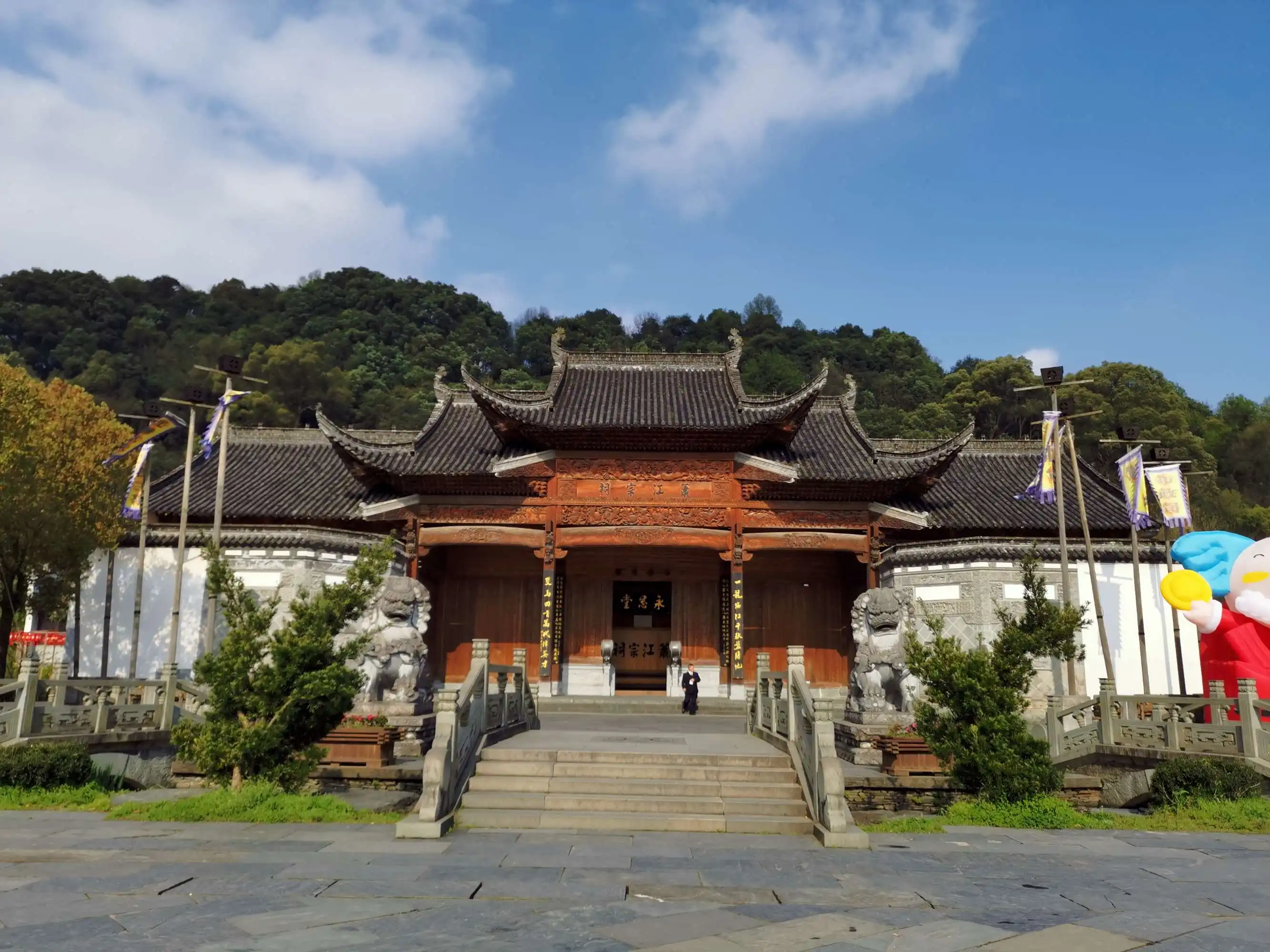
Jiangyong Memorial Hall江永纪念馆 is located at No. 58, Jiangwan Beimen street, Jiangwan Town, Wuyuan County. The Jiangyong Memorial Hall was renovated and opened in May 2002. The museum is divided into four parts, where the life story, main works, and achievements of Jiang Yong are displayed in cabinets, boards, and objects. Jiangyong Memorial Hall became the first historical and cultural celebrity Memorial Hall in Jiangxi Province.
Jiang Yong was a famous Confucian scholar, linguist, mathematician, and astronomer in the Qing Dynasty, and a pioneer of the Hui school. He was greatly influenced by Mei Wending梅文鼎 in mathematics and astronomy.
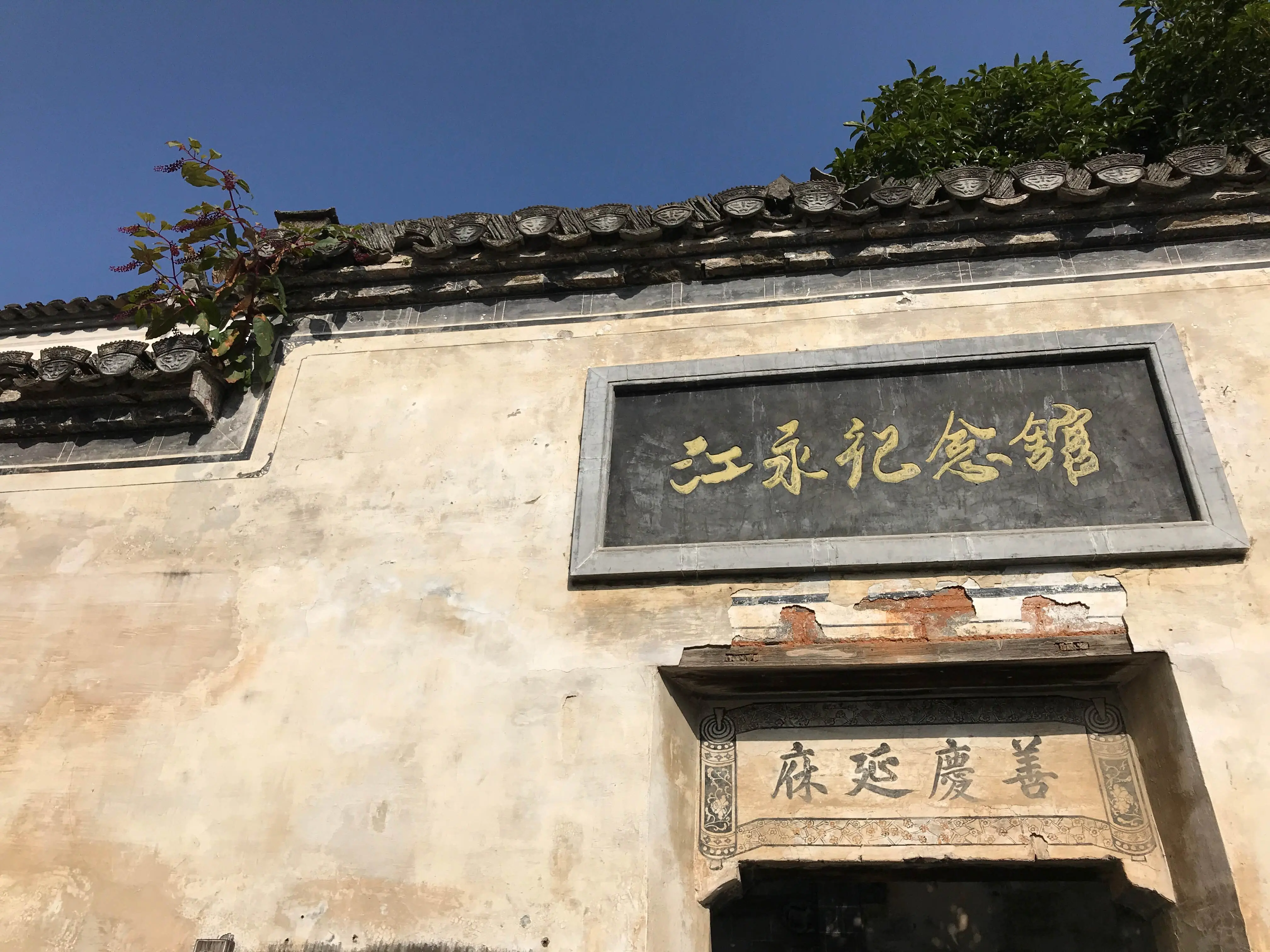
Sanxing hall三省堂 is the ancestral home of Jiang Qian江谦, an educator and Buddhist scholar in the late Qing Dynasty and the early Republic of China. The Analects论语 of Confucius, the famous language of the Tang Dynasty, means that the descendants will remember the moral cultivation of “I say three things and examine myself”.
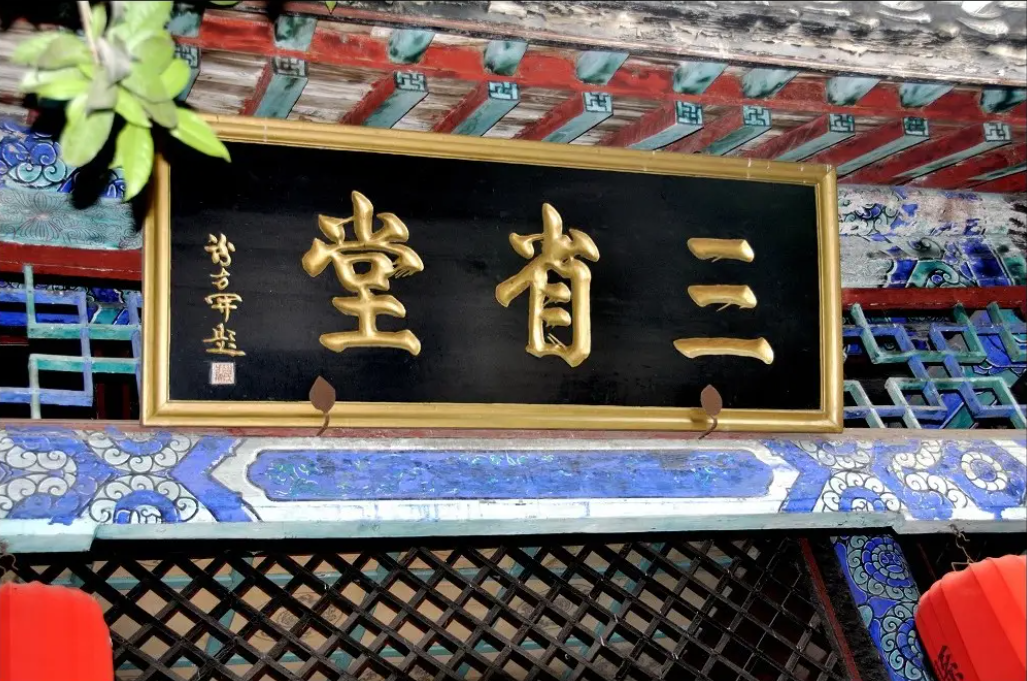
The Beidou Seven Star Well北斗七星井 is located in the Jiangwan Scenic Area, Jiangwan Town, Wuyuan County. The Beidou Seven Star well embodies the highest principle of Chinese geomatics that “heaven, earth, and people are one”. The Liyuan River梨园河 on the south side is in the “s” shape of the Taichi diagram.
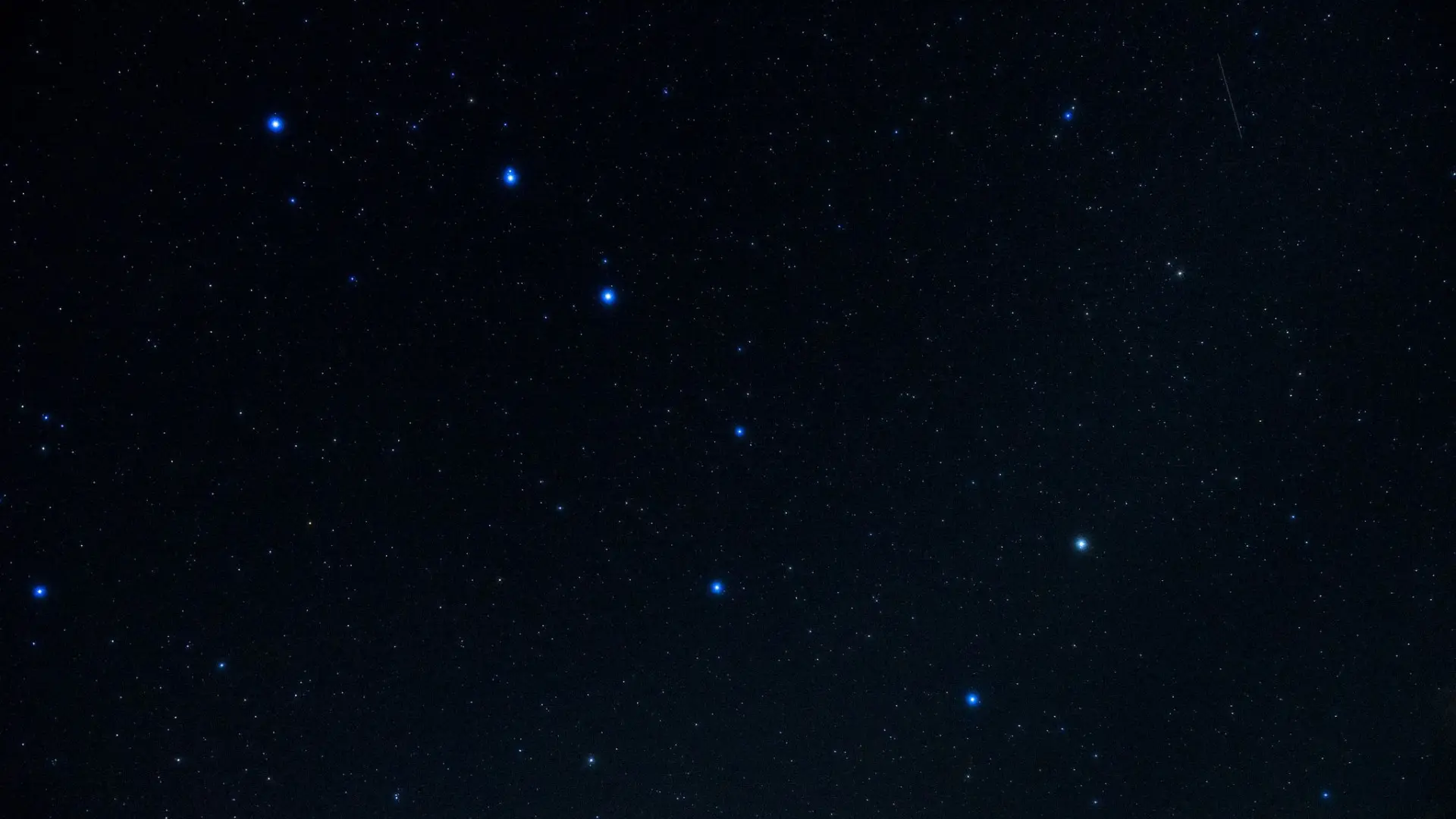
Culture and customs
The intangible cultural heritage of Jiangwan Tofu Rack豆腐架 is a product of agricultural culture. It was originally a folk activity for local people to exorcise demons and diseases, bring good luck and pray for good weather. Later, it evolved into a display of traditional festivals and a festive atmosphere. At every major festival, the villagers will spontaneously organize themselves to make tofu racks of various plays and patrol the streets and villages, which will become a custom over time.
is based on the floating three-dimensional stage “the shelf for making tofu”. The tofu shelf is decorated with colorful silk and flowers. Children aged 7 to 12 act as plastic characters and act as characters in the drama.
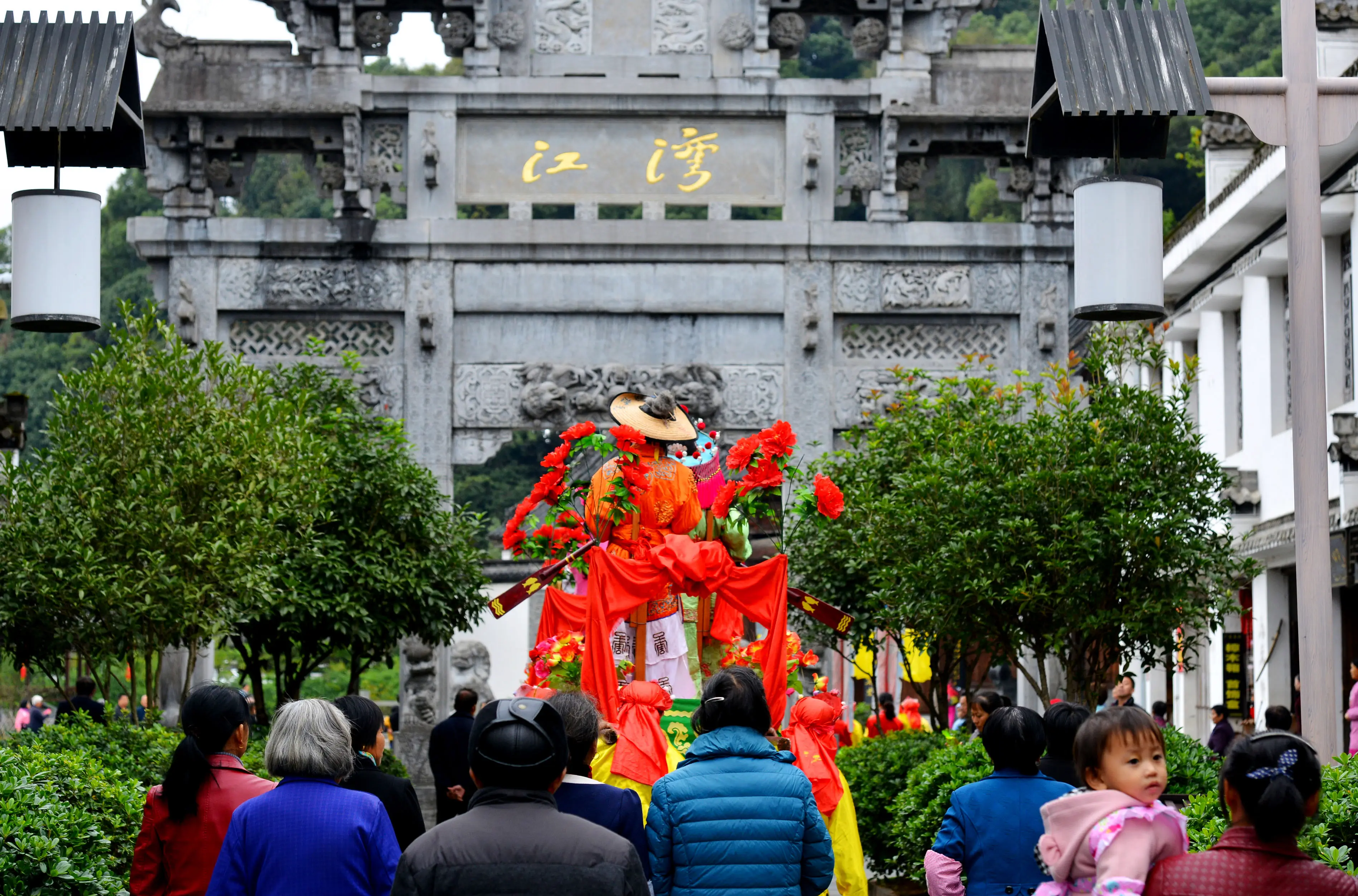
It is made according to different forms of facial makeup from Kunju Opera昆曲, Huizhou opera徽剧, and Beijing opera京剧. The themes of children’s modeling drama are mostly taken from historical allusions and legendary drama characters, and each of them has a typical story character.
Wuyuan Banlong lantern, also known as Banqiao lantern, is a large-scale floating ornamental lantern. It has a long history and a variety of forms. It is distributed in all major towns and natural mountain villages in the county. There is a custom of welcoming lanterns and dancing dragons during the Spring Festival.
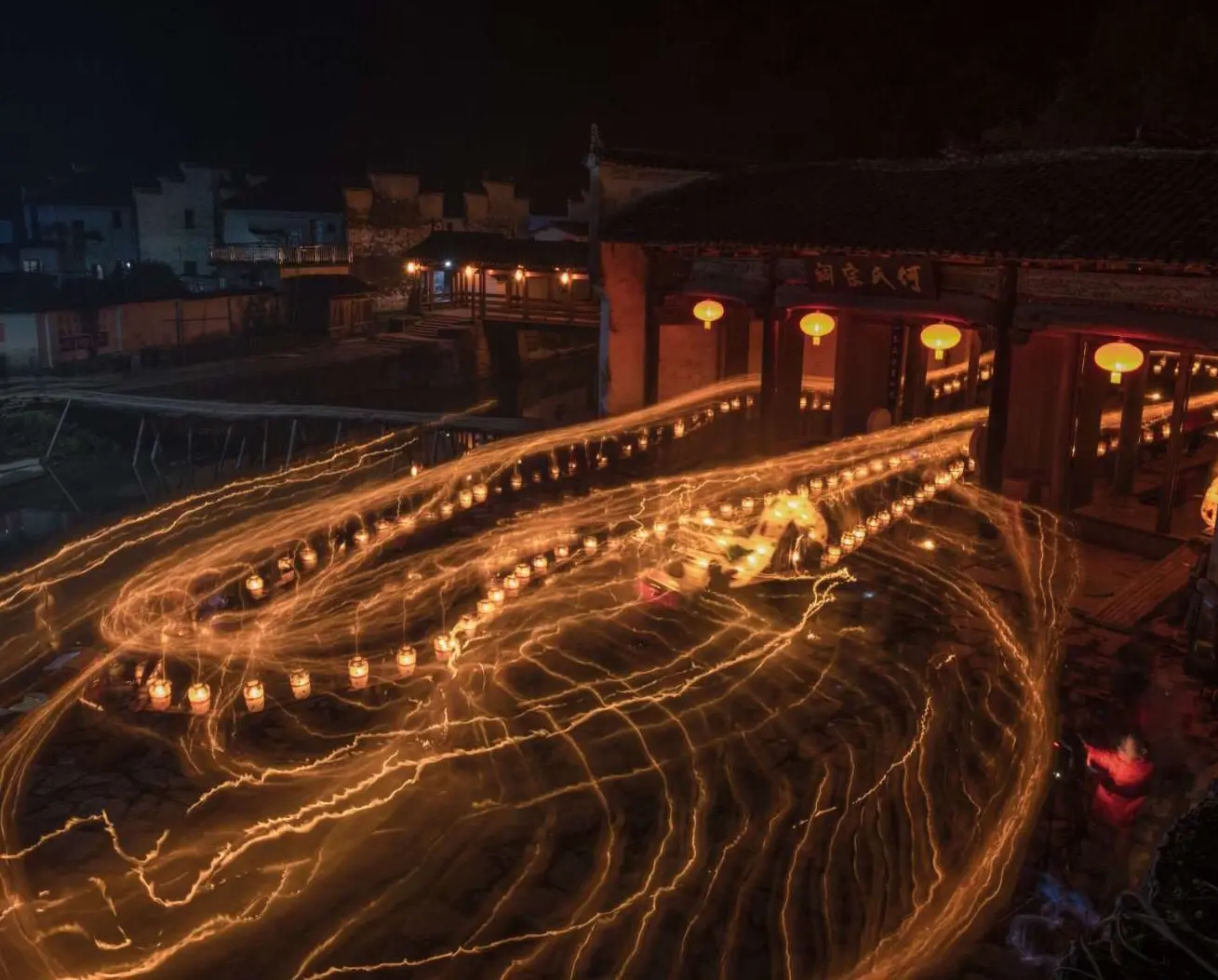
Dragon lantern板龙灯 is composed of four parts: the dragon head, the dragon body, the dragon tail, and the lamp support. The length of the whole dragon varies from 50 to 60 plates, and the length can reach more than 100 plates, about 200 meters. The Dragon lanterns are accompanied by such auxiliary colorful lanterns as head plate, canopy lamp, umbrella, lion play ball, journey to the west, horse lantern, fish lantern, etc.
The only 5A-level scenic spot in Wuyuan: Jiangwan
You might be interested in: